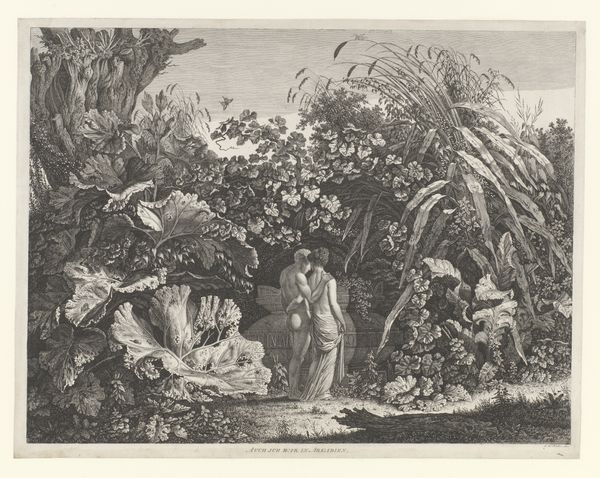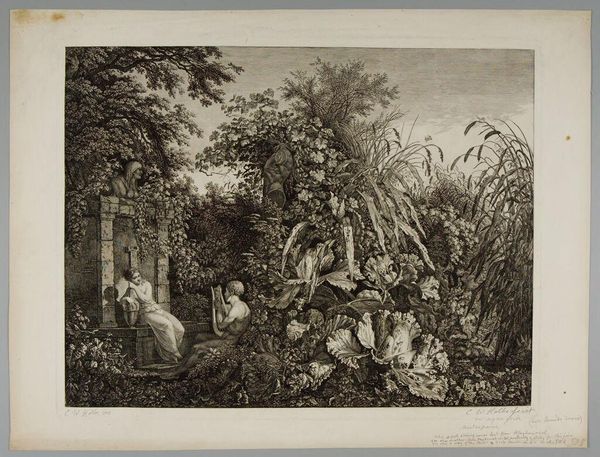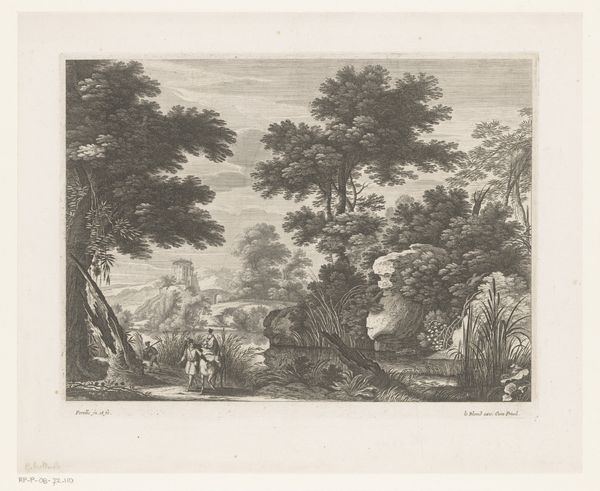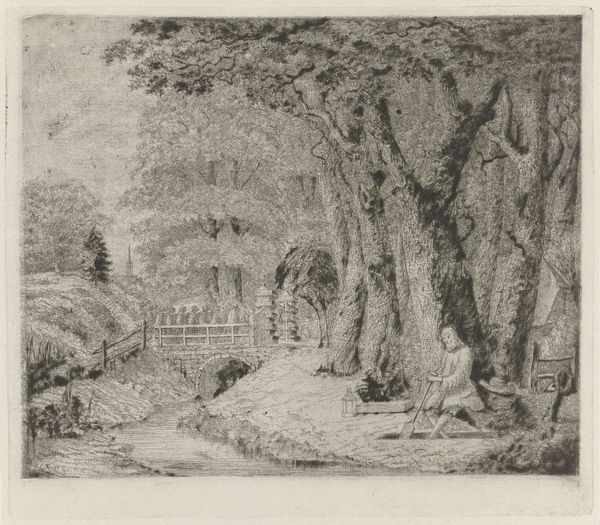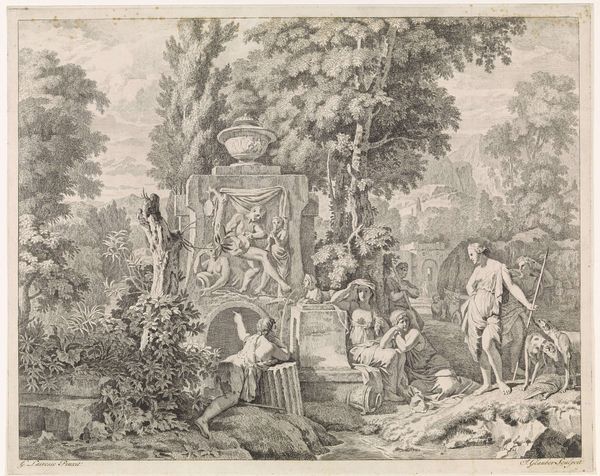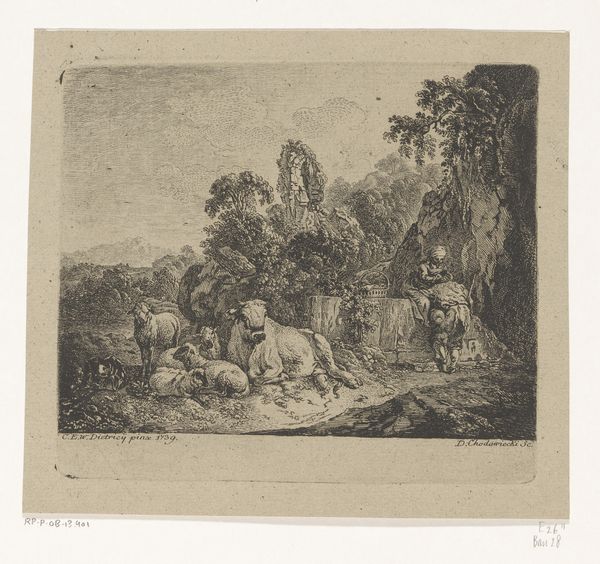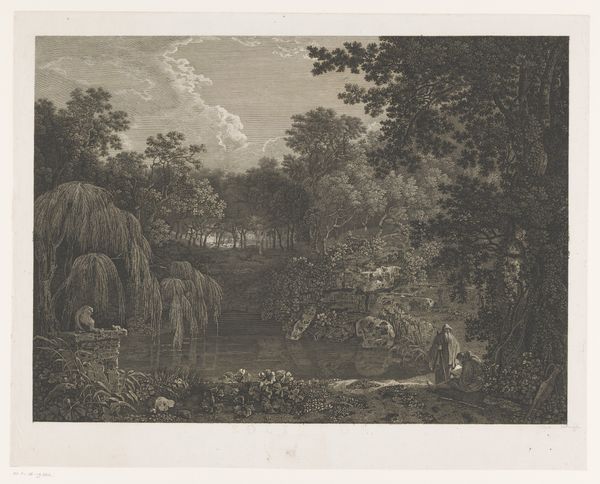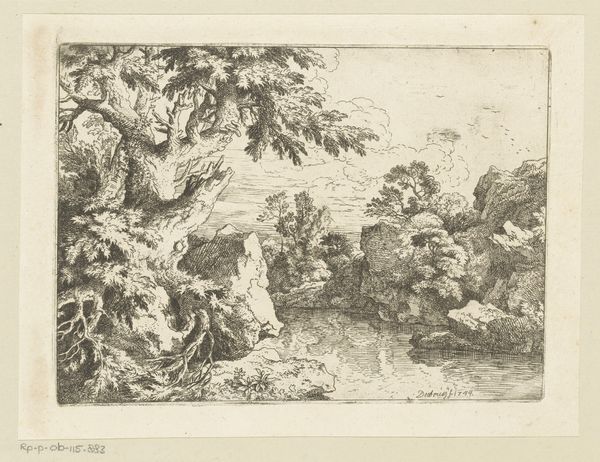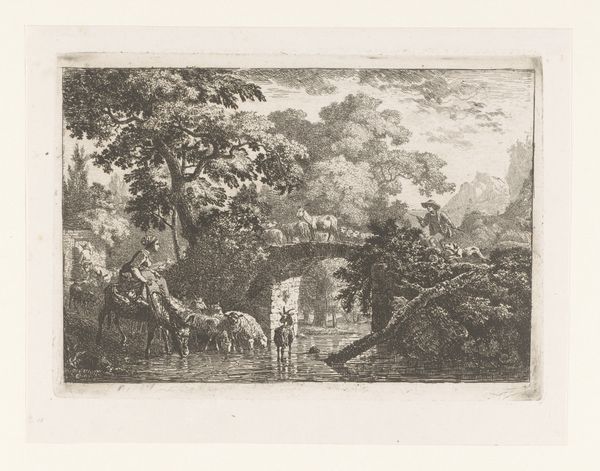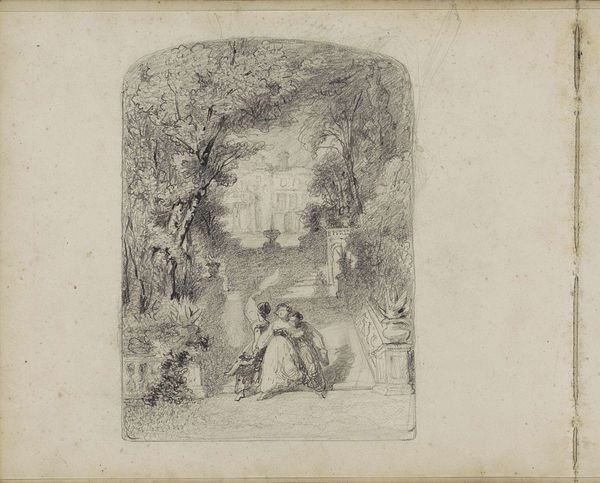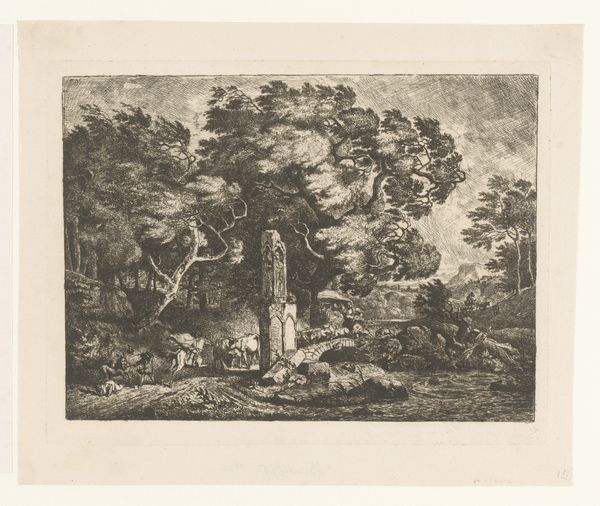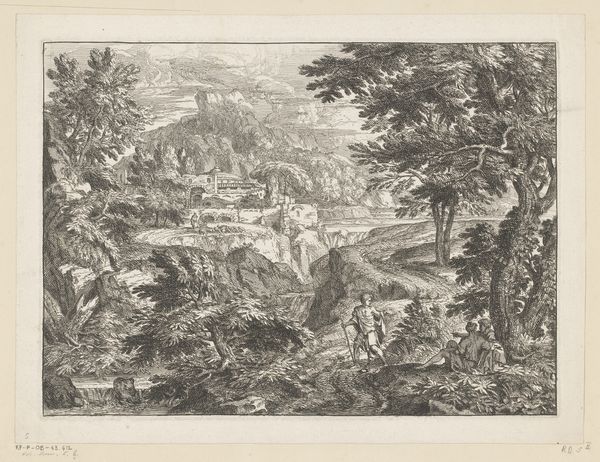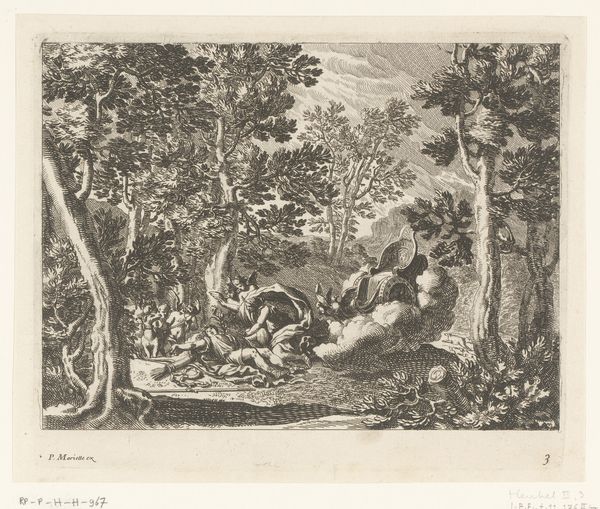
drawing, print, etching, engraving
#
drawing
#
neoclacissism
# print
#
etching
#
landscape
#
figuration
#
romanticism
#
genre-painting
#
engraving
Dimensions: 415 × 533 mm (plate); 456 × 575 mm (sheet)
Copyright: Public Domain
Curator: I'm immediately drawn into the stillness of this scene. It's intricate, a meticulously etched tableau with a classical sensibility. Editor: Indeed. We’re looking at "Youth Playing a Lyre to a Maiden by a Fountain," an engraving created around 1803 by Carl Wilhelm Kolbe. He was a German artist known for his detailed landscape and genre scenes. Curator: Engraving… such a labor-intensive process. It demands immense control. What strikes me is how Kolbe manages to balance the dense foliage with the stark lines of the fountain. The whole thing feels incredibly deliberate in its artifice, from the almost absurdly oversized foliage in the foreground to the staged placement of figures and objects. Editor: The deliberate artifice you point out really underscores the influence of both Neoclassical and Romantic sensibilities at the time. Notice how the piece uses classicized figures placed within a "natural," yet undeniably constructed environment. Kolbe had patrons among a wealthy elite in that era, who cherished scenes such as these that celebrated idyllic escape but within tightly controlled boundaries. This print would have likely been acquired, framed, and hung in one of their estates, continuing this visual theme across different art forms and spaces. Curator: The clothing of the maiden and youth reflects Kolbe's patron’s own classical tastes. Kolbe's mastery over the burin and the plate speaks to both a refined skill, and I suspect an arduous apprenticeship. To me, there’s almost a pre-Raphaelite quality, albeit predating the movement by several decades. This reflects how aesthetics are being re-processed through rapidly-changing technology. These landscapes begin circulating as readily-produced images; consumption and availability rapidly change, with far-reaching social consequences. Editor: I appreciate your reading through material conditions. It certainly speaks to the complex cultural dynamics of that era: revolution and rapid social changes happening all around this artist even while his subjects continued to inhabit imagined pastorals removed from conflict. Looking closer at "Youth Playing a Lyre" really provides rich insights into the role art played in negotiating those societal tensions. Curator: Absolutely. Examining art this closely always recontextualizes its meaning. Editor: Indeed. I think we both have different interpretations of art here, yet that highlights what an insightful practice this truly can be.
Comments
No comments
Be the first to comment and join the conversation on the ultimate creative platform.
